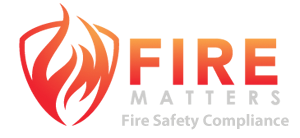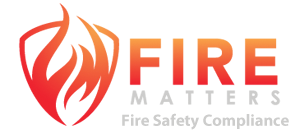Fire Compliance: Why Documentation Is the First Line of Defence
When it comes to fire safety, most people think of alarms, sprinklers, extinguishers, and evacuation drills. But long before any of those systems are needed, there is one critical layer of defence that underpins them all: documentation. Without it, compliance cannot be proven, liability increases, and lives may be put at risk.
The Problem: Mistaking Invoices for Service Records
In many Queensland buildings, body corporate committees and managing agents rely on service provider invoices as “evidence” that fire safety systems have been inspected or maintained. While an invoice shows that a bill has been issued and paid, it is not a compliant service record.
An invoice is simply a payment record. It confirms that a transaction occurred—it does not prove:
- Which fire safety installations were serviced,
- Where those installations are located,
- What maintenance tasks were performed,
- The standards against which they were checked, or
- Whether defects or failures were identified and rectified.
This gap can create serious compliance risks if it is ever tested in an audit or, worse, after an incident.
The Problem: Mistaking Invoices for Service Records
In many Queensland buildings, body corporate committees and managing agents rely on service provider invoices as “evidence” that fire safety systems have been inspected or maintained. While an invoice shows that a bill has been issued and paid, it is not a compliant service record.
An invoice is simply a payment record. It confirms that a transaction occurred—it does not prove:
- Which fire safety installations were serviced,
- Where those installations are located,
- What maintenance tasks were performed,
- The standards against which they were checked, or
- Whether defects or failures were identified and rectified.
This gap can create serious compliance risks if it is ever tested in an audit or, worse, after an incident.
What the Law Requires
Under Queensland legislation, specifically the Building Fire Safety Regulation 2008 (BFSR 2008) Section 55, and the requirements of AS 1851 (Routine Service of Fire Protection Systems and Equipment), service records must contain detailed information—not just proof of payment.
According to Section 1 of AS 1851, a compliant service record must include:
- The identity of the service provider and technician,
- The date and time the work was performed,
- The specific fire safety installation(s) serviced,
- The location of each item,
- The maintenance task or interval carried out,
- The results of inspection and testing,
- Any defects, failures, or conditions requiring follow-up, and
- Confirmation of corrective actions taken or required.
Without this detail, the record does not meet compliance standards, leaving the building and its stakeholders exposed.
What the Law Requires
Under Queensland legislation, specifically the Building Fire Safety Regulation 2008 (BFSR 2008) Section 55, and the requirements of AS 1851 (Routine Service of Fire Protection Systems and Equipment), service records must contain detailed information—not just proof of payment.
According to Section 1 of AS 1851, a compliant service record must include:
- The identity of the service provider and technician,
- The date and time the work was performed,
- The specific fire safety installation(s) serviced,
- The location of each item,
- The maintenance task or interval carried out,
- The results of inspection and testing,
- Any defects, failures, or conditions requiring follow-up, and
- Confirmation of corrective actions taken or required.
Without this detail, the record does not meet compliance standards, leaving the building and its stakeholders exposed.
Why Documentation Is the First Line of Defence
If a fire occurs, regulators, insurers, and coroners will not ask for an invoice—they will ask for service records. These records demonstrate that fire safety installations were not only paid for but were actually maintained in accordance with legal requirements.
- For body corporates: Proper documentation protects the committee from liability.
- For managers and agents: It provides proof of due diligence and compliance oversight.
- For owners and residents: It ensures that life safety systems will work when needed most.
Best Practice: Independent Audits
Even with service records in place, mistakes happen. That’s why the safest approach is to commission an independent audit by a qualified fire safety professional. An external review verifies that documentation is complete, accurate, and compliant with both AS 1851 and BFSR 2008. It also helps uncover gaps before regulators, insurers, or emergencies do.
Conclusion
Fire safety compliance doesn’t start with alarms or extinguishers—it starts with paperwork. Documentation is your first line of defence. Invoices prove that money changed hands; only compliant service records prove that fire safety obligations were met.
For body corporates, agents, and owners, the message is clear: insist on full service records, not just invoices, and invest in independent audits. It’s the only way to ensure compliance, protect liability, and safeguard lives.

